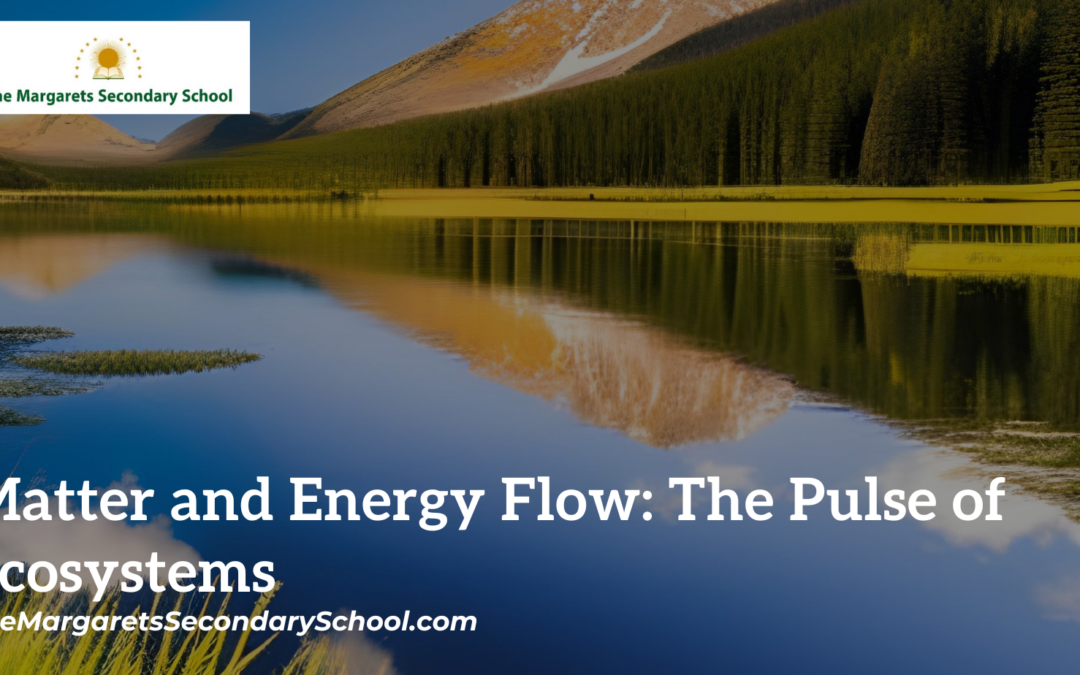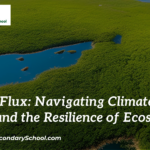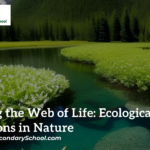Matter and Energy in Ecosystems
Ecosystems are intricate and dynamic networks where matter and energy constantly flow, shaping the balance of life and sustaining the intricate web of relationships between organisms and their environment. Understanding the movement of matter and energy within ecosystems is key to unraveling the mysteries of life on Earth and to managing the delicate balance that supports all living things.
The Dance of Energy: Trophic Levels and Food Webs
Energy is the lifeblood of ecosystems, driving all biological processes. It enters ecosystems from the sun, captured through photosynthesis by plants, algae, and some bacteria. This energy is then transferred through trophic levels—different layers of a food chain or food web.
At the base of the trophic pyramid are primary producers, which convert sunlight into chemical energy. Herbivores occupy the next level, consuming plants. Carnivores that eat herbivores make up the next level, followed by top predators. As energy is transferred up the trophic levels, it is progressively lost as heat and used for metabolic processes, limiting the number of trophic levels in most ecosystems.
The Circle of Life: Matter Cycling in Ecosystems
Unlike energy, which flows through ecosystems, matter is recycled. Nutrient cycling is the process by which essential elements like carbon, nitrogen, and phosphorus move through living and non-living components of ecosystems. Decomposers and detritivores play a crucial role in breaking down dead organic matter, returning nutrients to the soil or water, where they can be taken up again by plants.
The carbon cycle is a prime example of matter cycling in action. Carbon dioxide is taken in by plants during photosynthesis, incorporated into organic compounds, and passed along the food chain. When organisms die, they release carbon back into the environment through decomposition or respiration.
Ecosystem Services: The Role of Matter and Energy
The flow of matter and energy isn’t just an abstract concept—it has real-world implications for ecosystems and the services they provide to humans. Ecosystem services include everything from clean air and water to pollination of crops and climate regulation. Understanding the movement of matter and energy allows us to predict how changes in ecosystems might affect these services and, in turn, human well-being.
For instance, deforestation disrupts the carbon cycle by releasing stored carbon into the atmosphere, contributing to climate change. Overfishing can disrupt marine food webs, leading to imbalances in populations and potential collapses of fisheries. By recognizing these connections, we can make informed decisions to preserve the services that ecosystems provide.
Human Impact: Balancing Act and Conservation
Human activities have profound effects on the flow of matter and energy in ecosystems. Deforestation, pollution, and climate change can alter energy and nutrient cycles, leading to imbalances that threaten biodiversity and ecosystem services. Finding ways to mitigate these impacts while meeting the needs of a growing global population is one of the greatest challenges of our time.
Conservation efforts play a critical role in maintaining the delicate balance of ecosystems. By protecting habitats, promoting sustainable land and water management, and reducing pollution, we can help ensure that ecosystems continue to function properly, supporting both the natural world and our societies.
Conclusion: Guardians of the Ecosystem Symphony
Matter and energy are the invisible currents that run through the intricate fabric of ecosystems, driving life’s processes and sustaining the relationships that bind all living things. As we explore these flows, we gain insights into the intricacies of nature’s workings and our own place within the grand tapestry of life. By understanding and respecting these flows, we become the guardians of the ecosystem symphony, ensuring that the harmonious dance of matter and energy continues to shape the world around us for generations to come.





